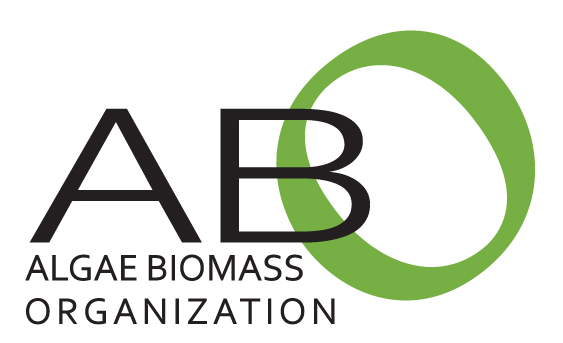To boost a recovering economy and ensure a clean energy future, an immediate critical need and unique opportunity exists for a just transition from fossil-based energy and products towards a sustainable bioeconomy in a safe and equitable manner. Greenhouse Gas Emission (GHG) reductions are foundational to such sustainable development while enhancing US energy security and independence. Otherwise, a continued reliance on fossil fuels means that the US will continue to see rising GHG emissions, fuel price volatility, energy security risks and stranded communities and assets. Although breakthroughs in electric battery technology will continue to transform the passenger vehicle fleet, long-haul trucks, heavy machinery, marine transportation and aviation[1] still rely primarily on fossil fuels and replacement turnover can take decades.
The Federal government has spurred investment and R&D decarbonizing the economy over the past several decades[2] with some success in building its biofuel and performance-advantaged chemical sectors. However, second and third generation technologies can expand these sectors with lower GHG emissions, less environmental impact, and greater drop-in functionality.[3] Another important advantage of new generation biofuels over earlier generation biofuels that are based on corn, animal fat and vegetable oils, is transitioning from food and feed competition to the inclusion of complementary technologies.
Algae, encompassing photosynthetic and non-photosynthetic aquatic organisms including microalgae and seaweeds (macroalgae), create a highly versatile and tunable platform for the development of fuels and products. In most cases, large scale algae production can be done on marginal land, including the underdeveloped coastal area around the US[4] that is unsuitable for food crops. Algae farms can currently produce over 60 metric tons of dry biomass per hectare per year[5] and may consume up to 1.8 kg of CO2 per kg of biomass[6]. Thus, algae farming – microalgae and macroalgae (seaweed) – plays a potentially significant role in carbon capture4.

State of the art catalytic upgrading of algae-derived oils and products creates fuels and products that are completely tunable to material applications and drop-in fuels including biodiesel, marine-grade diesel and jet fuel.[7] Algae biofuels are compatible with existing infrastructure and can be used with factory-standard engines without modifications.[8] Similarly, an emerging sector for algae-based biomaterials is on the horizon — algae can form the basis for plastics, foam products, and fertilizers/compost, with substantially lower GHG emissions and improved chemical safety compared to fossil-derived counterparts.[9] Startup companies are growing rapidly using algae to make shoes, skis, textiles, foam interiors, soil amendments and other products.
Federal agencies such as the DOE, USDA, NOAA, and NSF are funding strategic R&D in complementary areas to increase algal biomass productivity and product yield in economically and environmentally sustainable systems.[10] Algae was classified as a crop in the 2018 Farm Bill, a significant legislative victory that enabled algae producers to access the same USDA resources available to traditional crop growers.[11]

Barriers to cost-competitive and commodity-scale biofuels and biomaterials include cultivation, harvesting and production costs.[12],[13] Further challenges include competing with and integrating into a fossil fuel and plastics economy supply chain and infrastructure. Additional economic value is possible through valorizing high value co-products from the production of biofuel that include biomaterials, chemicals, nutraceuticals, animal feed, and biofertilizers.[14] [15] A recent calculation and projection of algae-based fuels showed that with the inclusion of co-products, a fuel price of $2.50 per gallon can be achieved, providing a future sustained investment to 2030 to overcome the critical cost and technology barriers.[16]
The carbon capture opportunity of algae production follows the high farm productivity, highly effective CO2 assimilation potential and high carbon content of the biomass. Building on and expanding existing carbon capture and utilization tax and other incentive policies can further drive investment and innovations.
The US made significant investments in algae biofuels a decade ago, and the industry has advanced considerably since then due to the ability to valorize co-products and scientific and engineering advances in algae production. Now is the time to double-down on these investments to accelerate progress in the US algae industry and not risk the setbacks the US experienced in the solar industry. The US had seen progress in the solar industry in the 1970s, however, government investment stopped and the solar industry became a niche technology. Fortunately, in 2006 the US increased the solar investment tax credit (ITC) and California created the California Solar Initiative (CSI). These two policies, along with the incentive program in Germany, restarted the solar photovoltaic industry. The prices for solar were almost $10 per watt in 2006 and are now barely over $1 per watt[17] – about a 9 fold price decrease.[18] With a similar program for algae fuels, economies of scale could bring the price to $2.50per gallon –as cited above. Below are the recommended programs to bring about the economies of scale:
- Increase and expand 45Q tax credit: Increase 45Q Carbon Capture and Storage (CCS) tax credit for carbon utilization to $50/ton escalating to $80/ton over ten years and eliminate the annual tonnage qualifying threshold for qualified carbon capture facilities. A robust algae industry can deliver massive reductions in greenhouse gas emissions, but only if the infrastructure to deliver CO2 to algae cultivation facilities (including Direct Air Capture) is put into place. The 45Q incentive currently provides $35/ton for 12 years.[19] An increase in the tax credit, and eliminating the qualifying threshold, would help accelerate further investment in this infrastructure.
- Incentivize Federal procurement of biobased products: Provide Federal procurement allowance to spend up to 20% more for biobased products versus petroleum-based products. Federal law and the Federal Acquisition Regulation direct that all federal agencies purchase biobased products in categories identified by the U.S. Department of Agriculture (USDA). To date, USDA has identified 139 categories (e.g., cleaners, carpet, lubricants, paints) of biobased products for which agencies and their contractors have mandatory purchasing requirements. As USDA identifies product categories for mandatory federal purchasing, minimum biobased content is established for the category.[20]
- More investment in R&D – NREL, USDA: Long-term (5-10 year) R&D investment at both the fundamental and applied science level is critical to overcome the fundamental barriers in achieving the maximum solar energy conversion and carbon capture targets for algae fuels. Increased investment should also provide for collaborative research between the funding agencies and interface with the nascent commercial industry.
- Access to USDA loan guarantee program: Access to capital is extremely important in scaling a business. Allowing algae production facilities and operations access to the USDA Business & Industry (B&I) Loan Guarantee Program and increasing the cap of $25 million would help provide the necessary capital. Congress has already increased the budget of this program.[21]
Growing the algae industry will help create rural and agricultural jobs – everything from operators, engineers, and scientists to accounting, marketing development and logistics. These programs would help drastically reduce GHG emissions from medium and heavy duty trucks, aircraft and ships (which makes up 23%, 9% & 2% of the transportation GHG respectively).[22]
The algae industry is particularly important to rural communities, as many algae production facilities and operations are in rural areas.[23] Additionally, algae is a chemically safer alternative compared with its fossil-derived counterpart[24] which helps protect communities around refineries which tend to be disproportionately people of color and economically underserved.
About ABO
The Algae Biomass Organization (ABO) is the US based non-profit trade organization for the algae industry, with broad international participation. ABO’s mission is to promote algae, renewable and sustainable products from algae, and the development of viable commercial markets for both. We provide end-to-end connection for the industry, supporting people, companies, and organizations, as well as research, development, and commercial activities across the value chain.
ABO’s key activities:
- Facilitates commercialization and market development of micro and macro algae, specifically for food, feed, fuel, fertilizers, biomaterials, nutraceuticals and dietary supplements, cosmetics, and more – as well as ecosystem services and restoration, and greenhouse gas abatement.
- Delivers information to the public on initiatives, funding opportunities, and industry development.
- Provides a high-quality interactive repository of information on algae biomass technology, science, products, processes, patents, and economics.
- Hosts the Annual Algae Biomass Summit, an international event featuring cutting edge research and commercialization sessions, plenaries and keynotes from world-renowned speakers, and other meeting opportunities.
- Develops quality and measurement best practices for algal biomass, products, systems technology, and econometrics.
- Provides networking and collaboration opportunities.
- Presents career advancement and consultant opportunities.
Contact
Rebecca L. White, Ph.D.
Algae Biomass Organization, Executive Director
125 St. Paul St., PO Box 369
Preston, MN 55965
+1 (877) 531-5512 ext. 2
rwhite@algaebiomass.org
www.algaebiomass.org
References:
[1] https://www.energy.gov/eere/bioenergy/downloads/sustainable-aviation-fuel-review-technical-pathways-report
[2] 2020 Federal Activities Report on the Bioeconomy: Algae www.energy.gov/eere/bioenergy/downloads/federal-activities-report-bioeconomy-algae
[3] Barry, A. et al., 2016 National Algal Biofuels Technology Review, U.S. Department of Energy, 2016. doi:10.2172/1259407
[4] Froehlich, H. et al., Blue Growth Potential to Mitigate Climate Change through Seaweed Offsetting, Curr. Biol. 29 (2019) 1–7.
[5] IEA Bioenergy State of Technology Review – Algae Bioenergy. 2017. https://www.ieabioenergy.com/wp-content/uploads/2017/02/IEA-Bioenergy-Algae-report-update-Final-template-20170131.pdf
[6] Paul V., Chandra Shekharaiah P.S., Kushwaha S., Sapre A., Dasgupta S., Sanyal D. (2020) Role of Algae in CO2 Sequestration Addressing Climate Change: A Review. In: Deb D., Dixit A., Chandra L. (eds) Renewable Energy and Climate Change. Smart Innovation, Systems and Technologies, vol 161. Springer, Singapore. https://doi.org/10.1007/978-981-32-9578-0_23
[7] https://www.energy.gov/sites/prod/files/2020/07/f76/beto-integrated-strategies-to-enable-low-cost-biofuels-july-2020.pdf
[8] https://www.pressroom.ups.com/pressroom/ContentDetailsViewer.page?ConceptType=PressReleases&id=1438111777421-236; https://www.zdnet.com/article/algae-jet-fuel-helps-power-united-airlines-flight/; https://www.lanzatech.com/2018/10/04/virgin-atlantic-lanzatech-celebrate-revolutionary-sustainable-fuel-project-takes-flight/;
[9]https://www.bioplasticsmagazine.com/en/news/meldungen/20200127-The-global-bio-based-polymer-market-in-2019-A-revised-view.php
[10] 2020 Federal Activities Report on the Bioeconomy: Algae https://www.energy.gov/eere/bioenergy/downloads/federal-activities-report-bioeconomy-algae
[11] https://algaebiomass.org/blog/10424/algae-agriculture-triumphs-farm-bill-compromise/
[12] https://www.energy.gov/sites/prod/files/2020/07/f76/beto-2019-state-of-technology-july-2020-r1.pdf
[13] https://www.nrel.gov/docs/fy18osti/70715.pdf.
[14] Laurens, L., et al., Development of algae biorefinery concepts for biofuels and bioproducts; a perspective on process-compatible products and their impact on cost-reduction, Energy Environ. Sci. 10 (2017).
[15] Mehta P. et al. (2018) High-Value Coproducts from Algae—An Innovational Way to Deal with Advance Algal Industry. In: Singhania R., Agarwal R., Kumar R., Sukumaran R. (eds) Waste to Wealth. Energy, Environment, and Sustainability. Springer, Singapore. https://doi.org/10.1007/978-981-10-7431-8_15
[16] https://www.energy.gov/sites/prod/files/2020/07/f76/beto-2019-state-of-technology-july-2020-r1.pdf
[17] https://www.seia.org/solar-industry-research-data
[18] https://cleantechnica.com/2020/08/30/solar-panel-prices-have-dropped-off-cliff-sunk-into-ocean-solar-panels-9x-cheaper-than-in-2006/
[19] https://carboncapturecoalition.org/45q-legislation/
[20] https://www.biopreferred.gov/BioPreferred/faces/Welcome.xhtml
[21] https://www.usda.gov/media/press-releases/2020/05/22/usda-provide-1-billion-loan-guarantees-rural-businesses-and-ag
[22] https://www.epa.gov/greenvehicles/fast-facts-transportation-greenhouse-gas-emissions
[23] This is true across the nation – small communities in the Southwest (Texas, New Mexico, and Arizona), the Northeast (Maine, Connecticut, New Jersey, Vermont), the West Coast (California, Oregon, Washington), middle America (Idaho, Michigan, Illinois, Minnesota, Kansas, Nebraska, and others), in the Southeast (Georgia, Mississippi, Florida), Alaska, and Hawaii. (2015-2020 Algae Biomass Summit proceedings https://www.algaebiomasssummit.org/)
[24]https://www.bioplasticsmagazine.com/en/news/meldungen/20200127-The-global-bio-based-polymer-market-in-2019-A-revised-view.php


